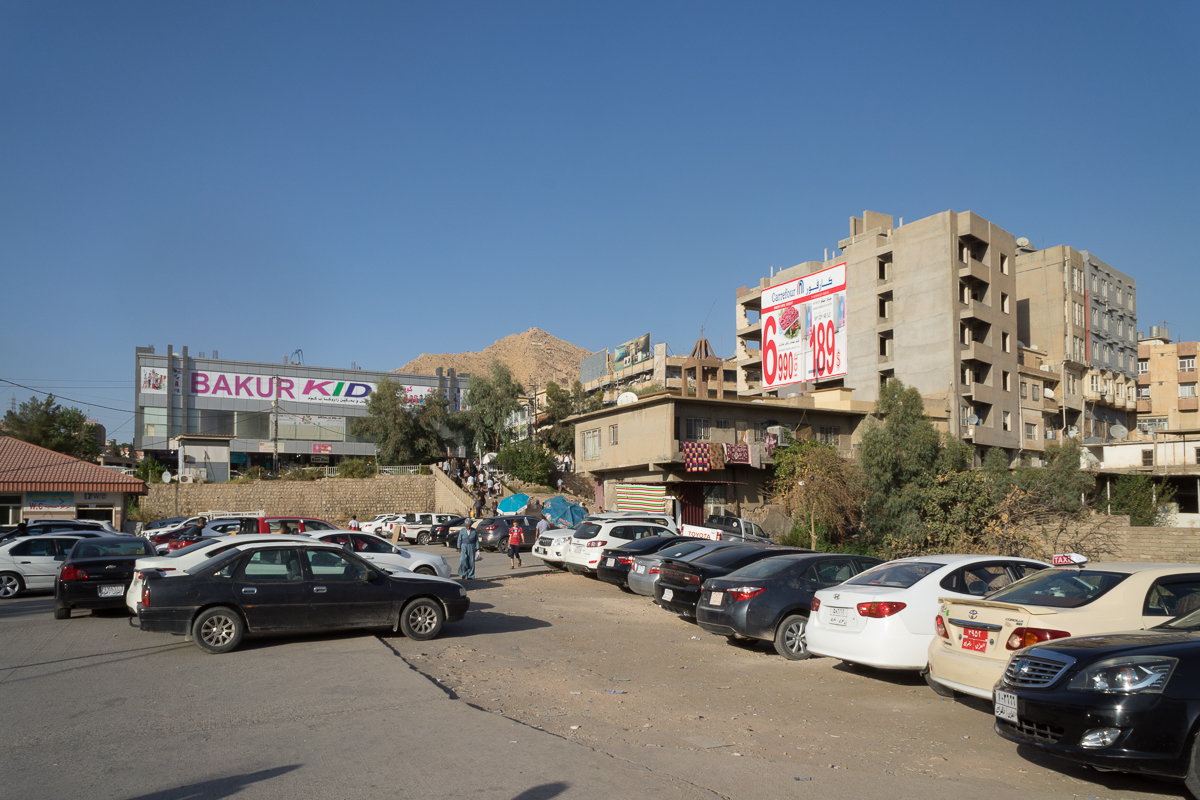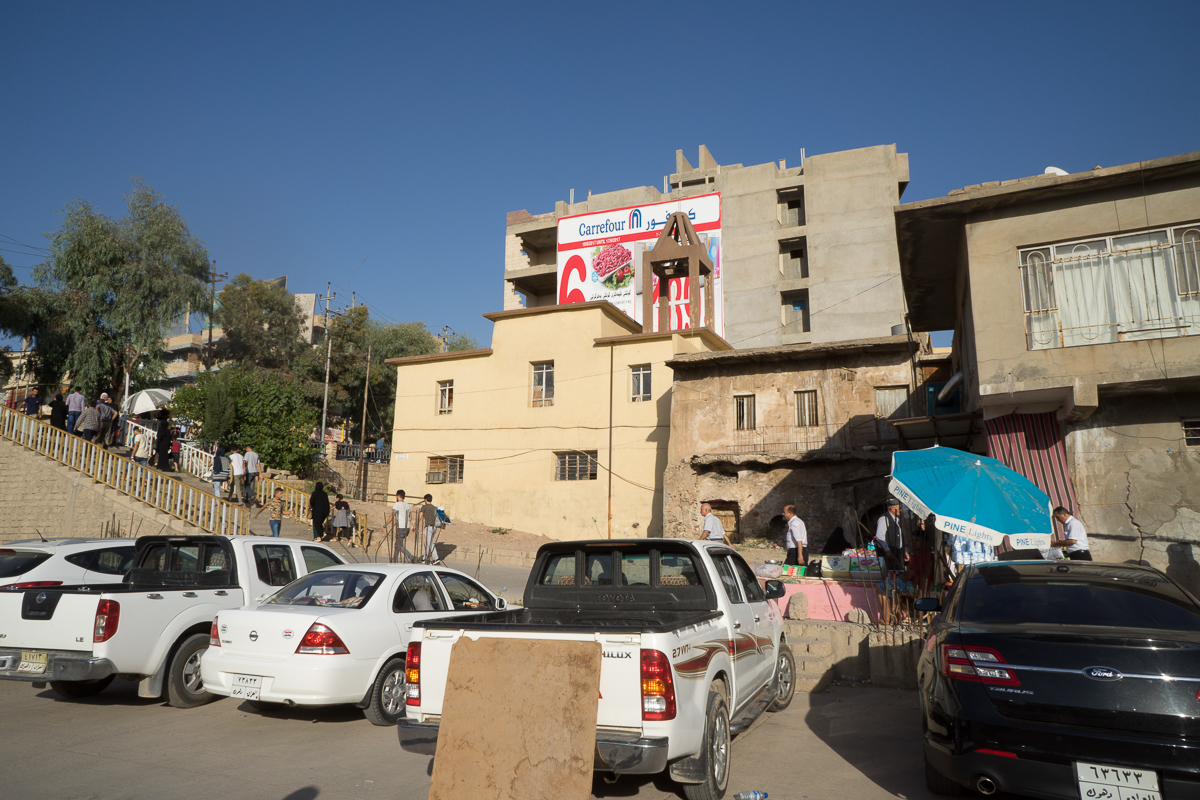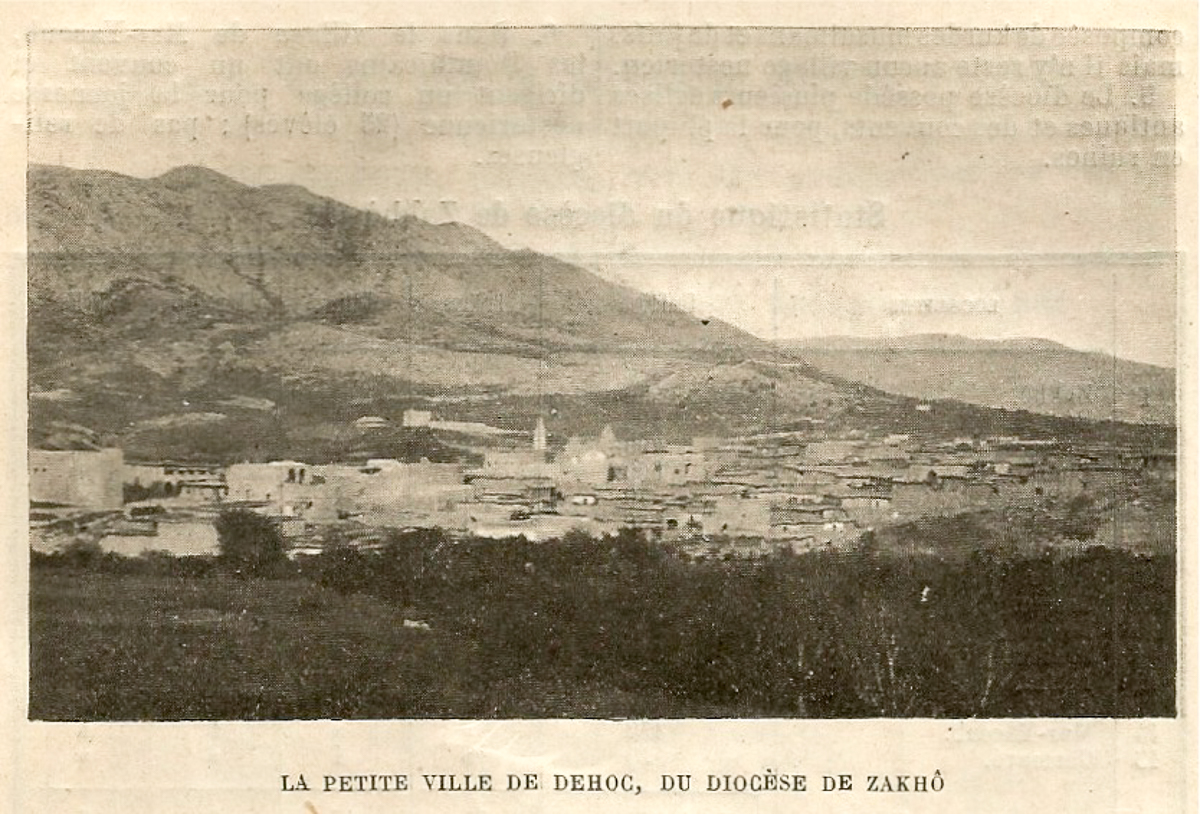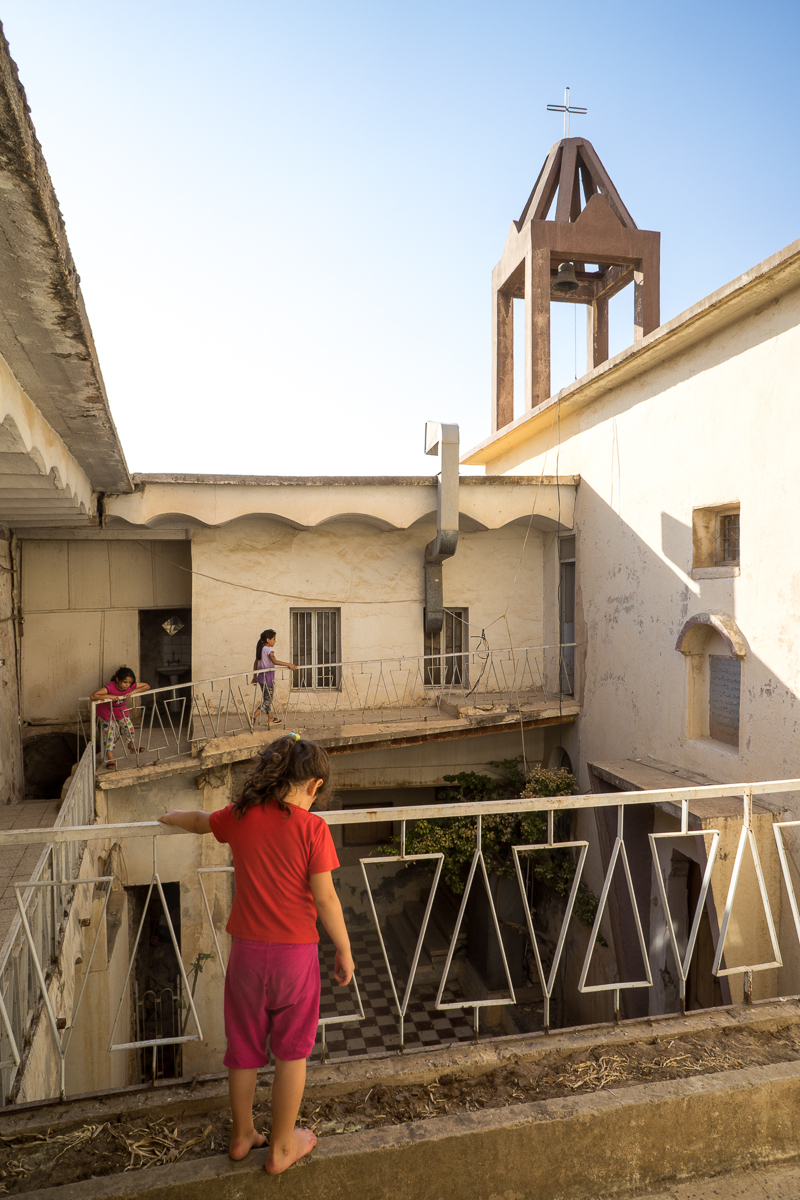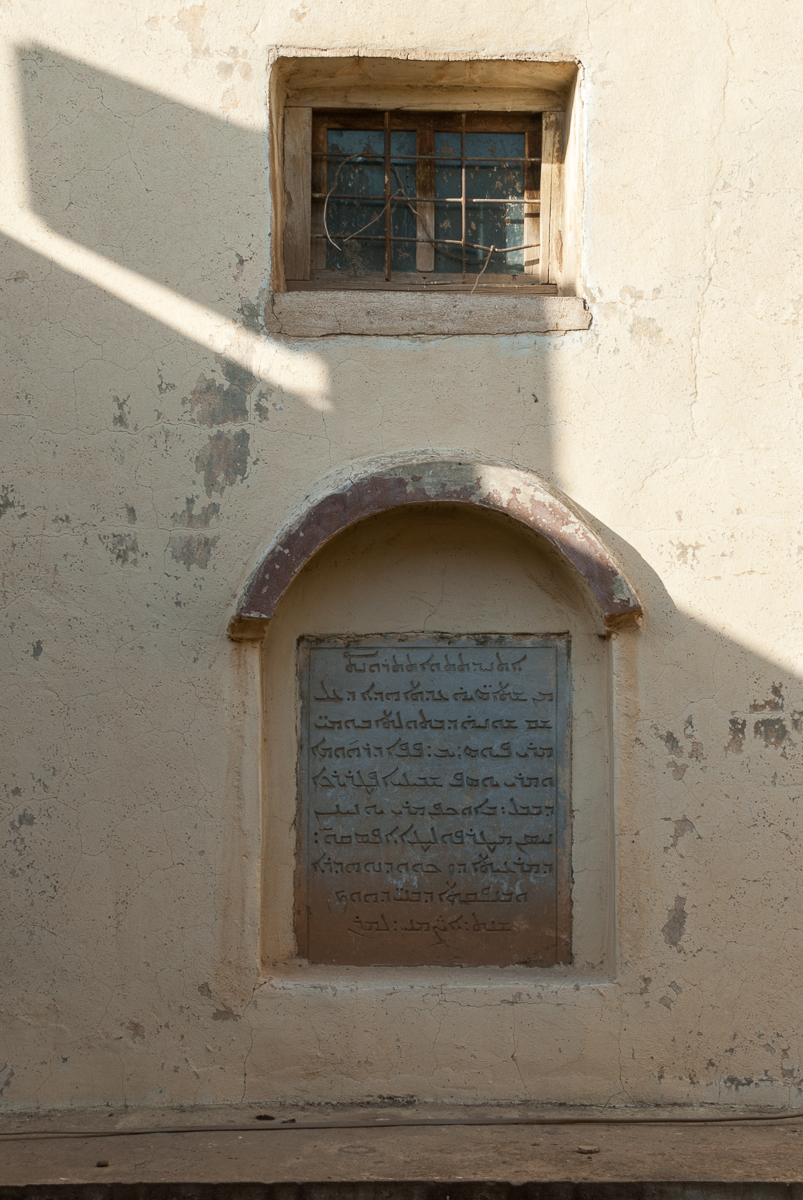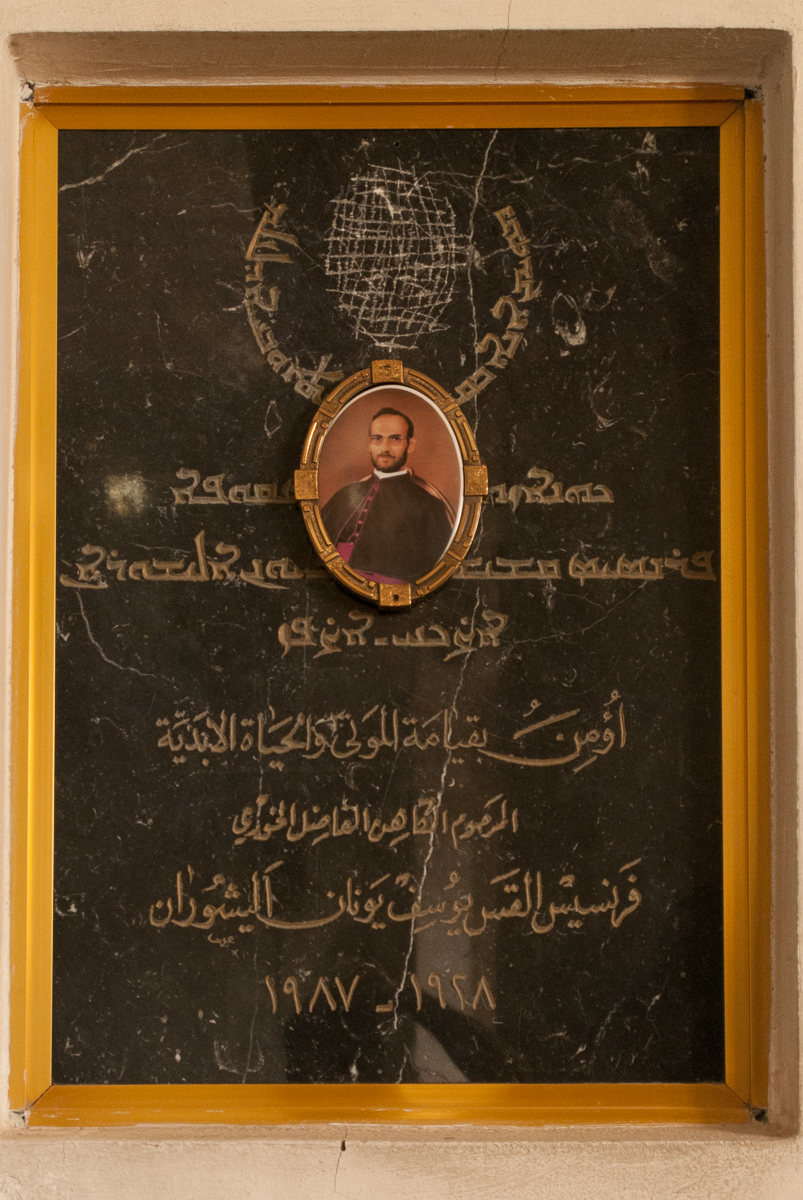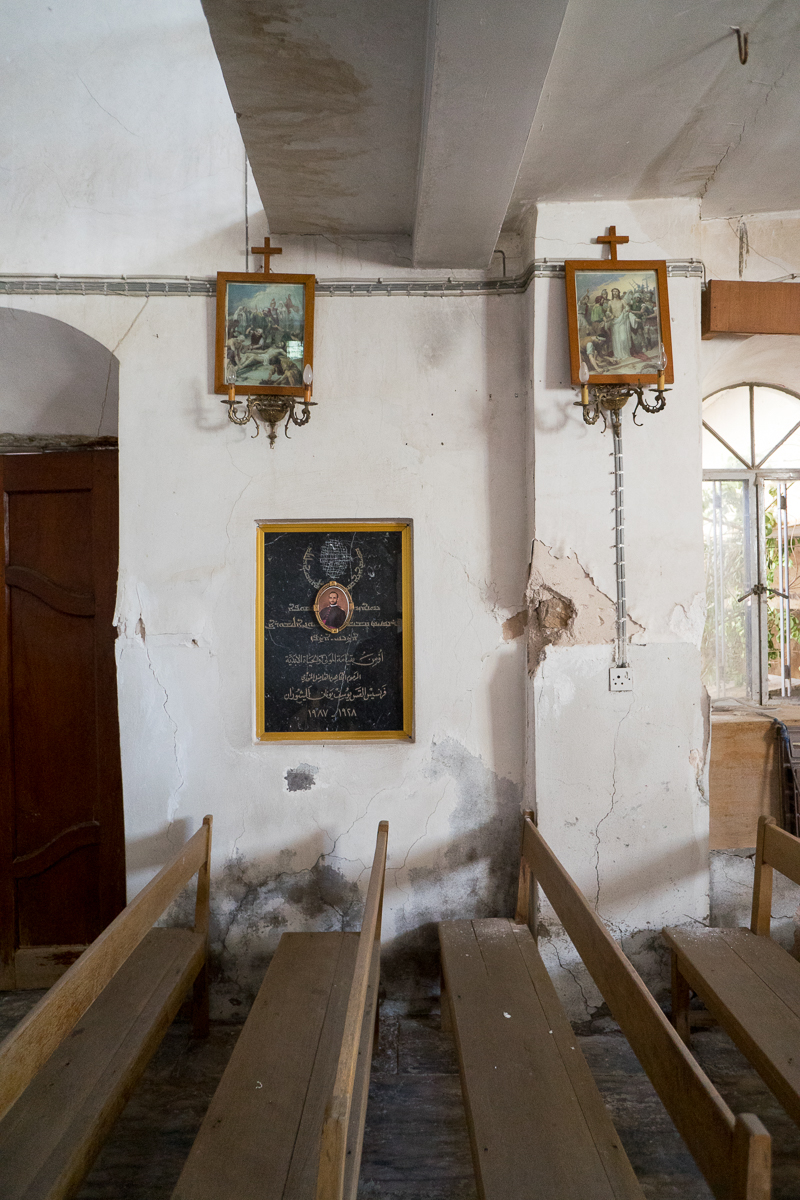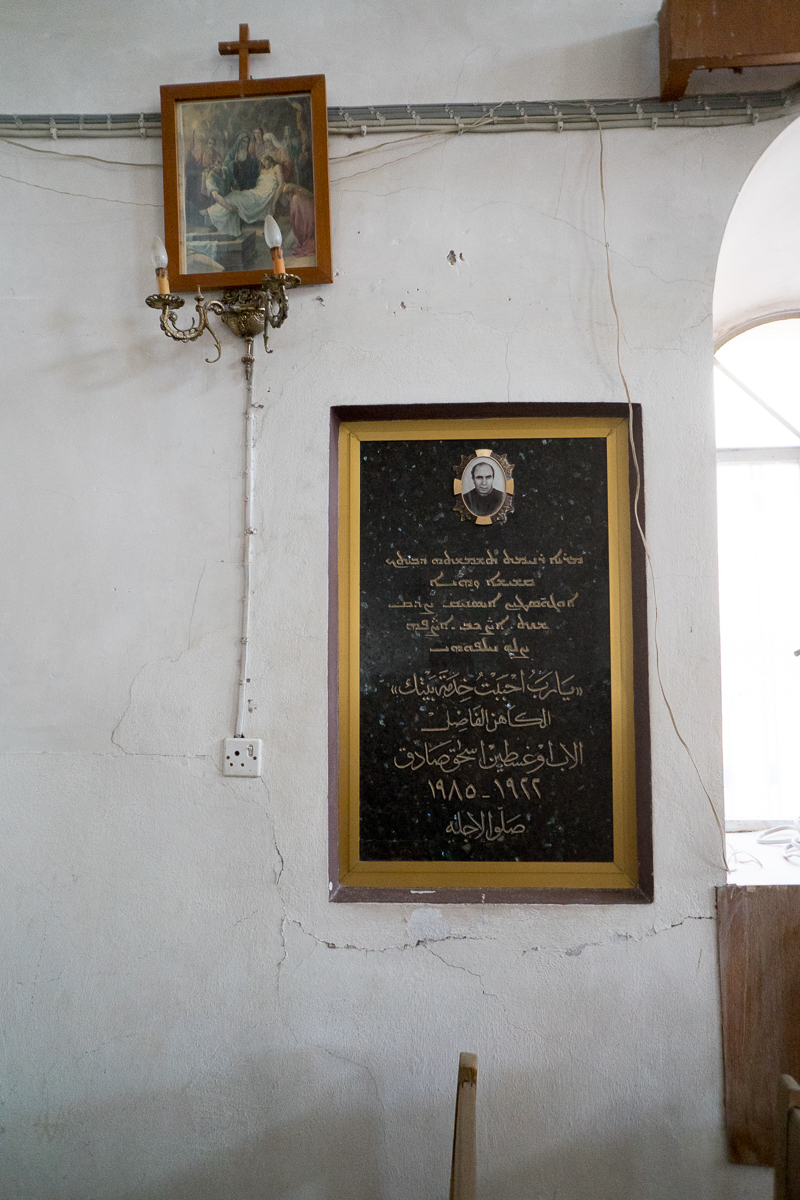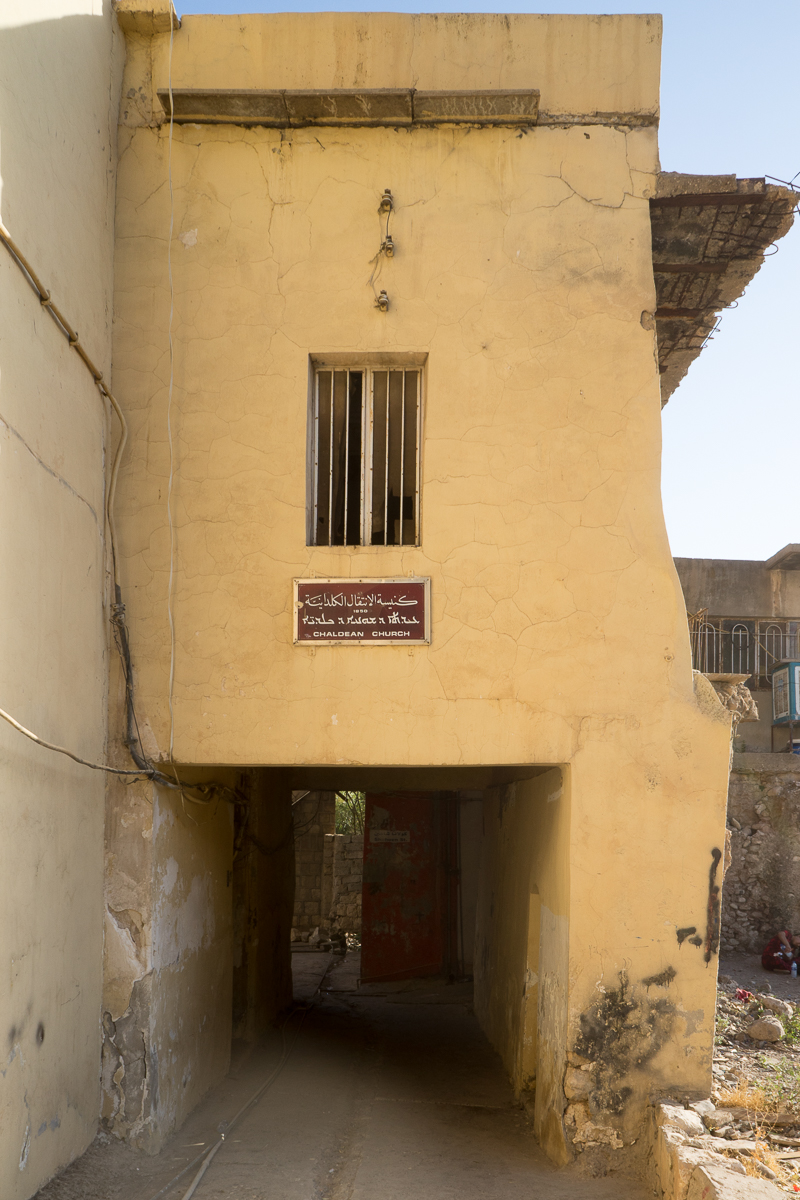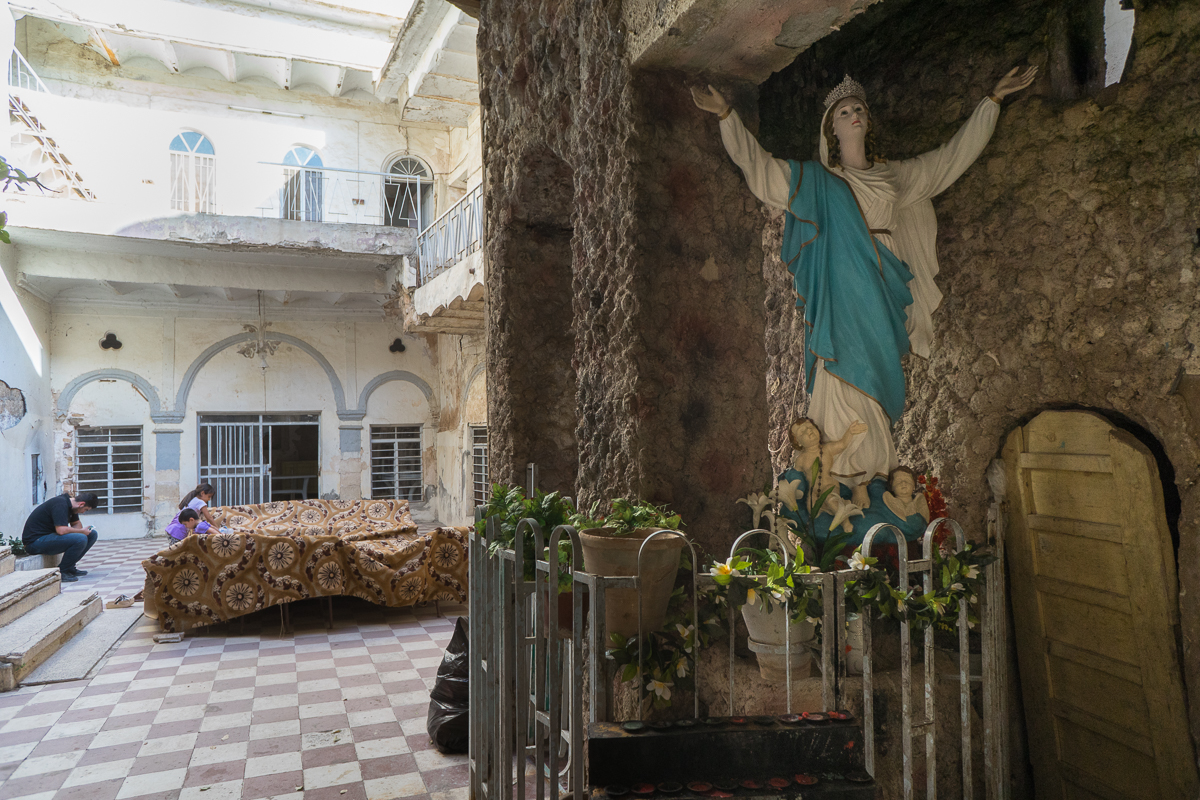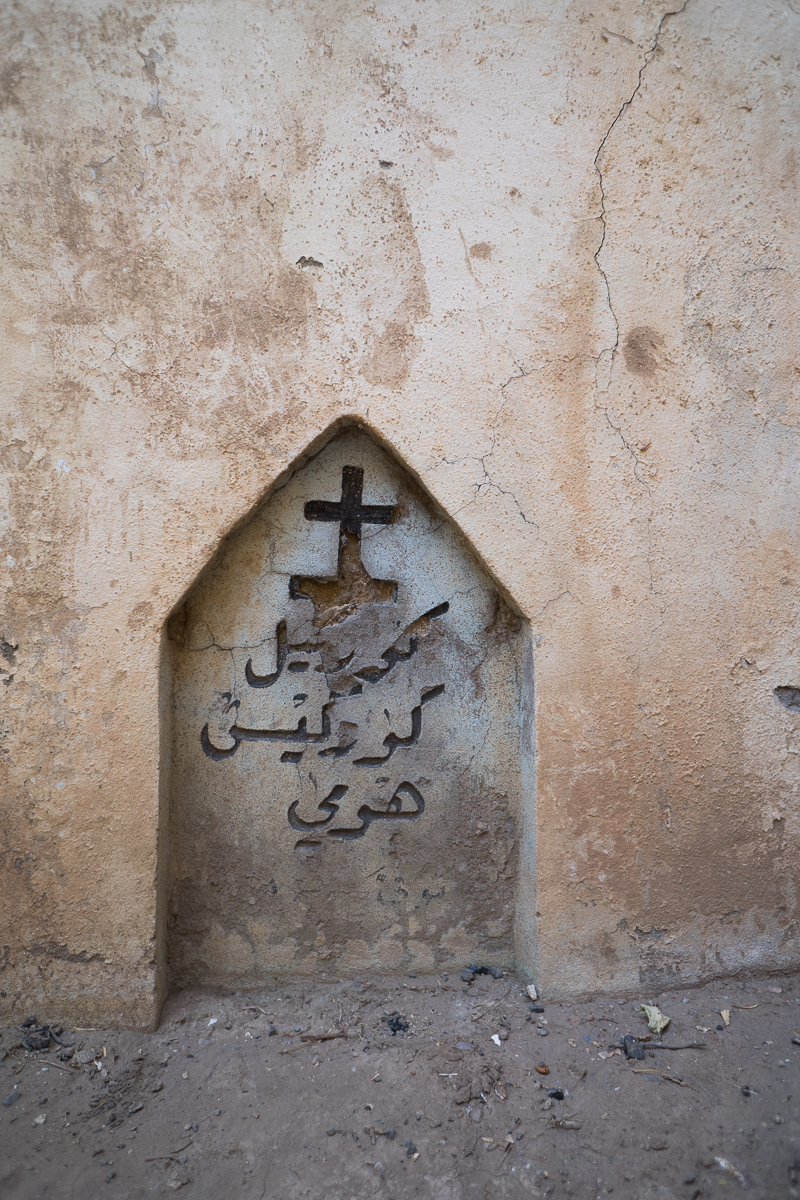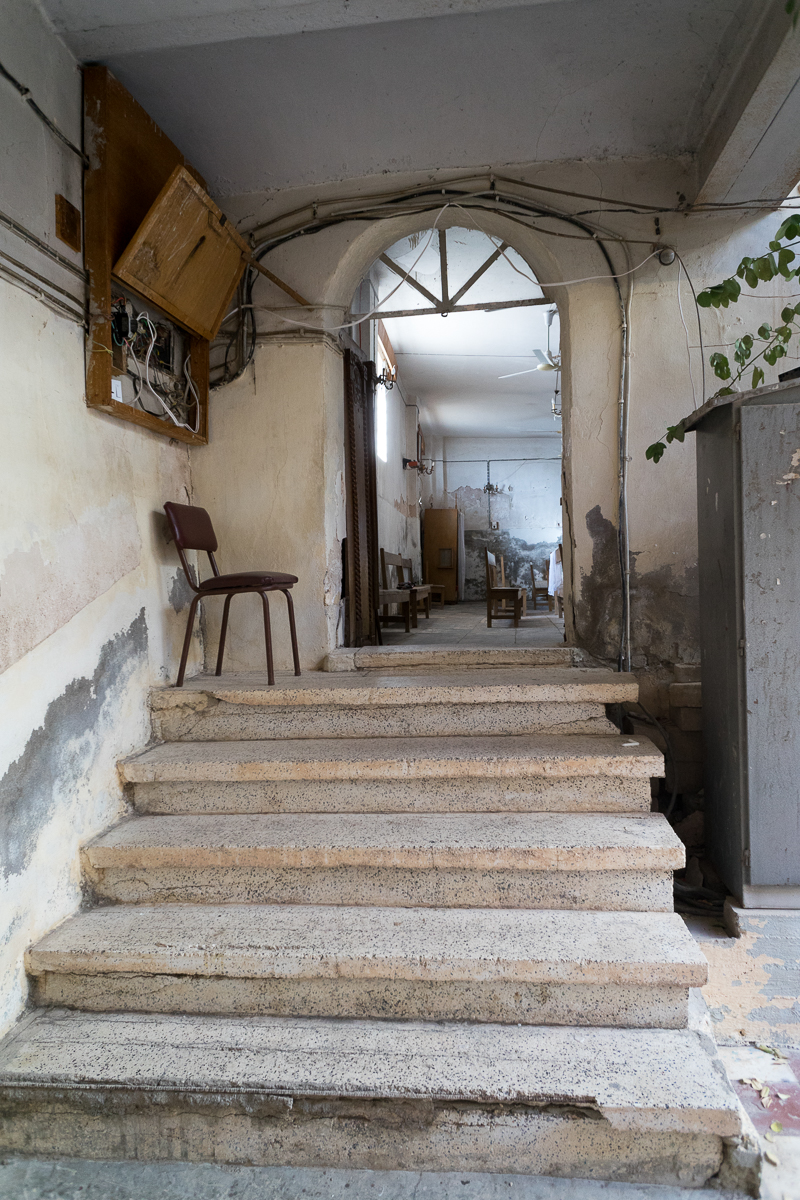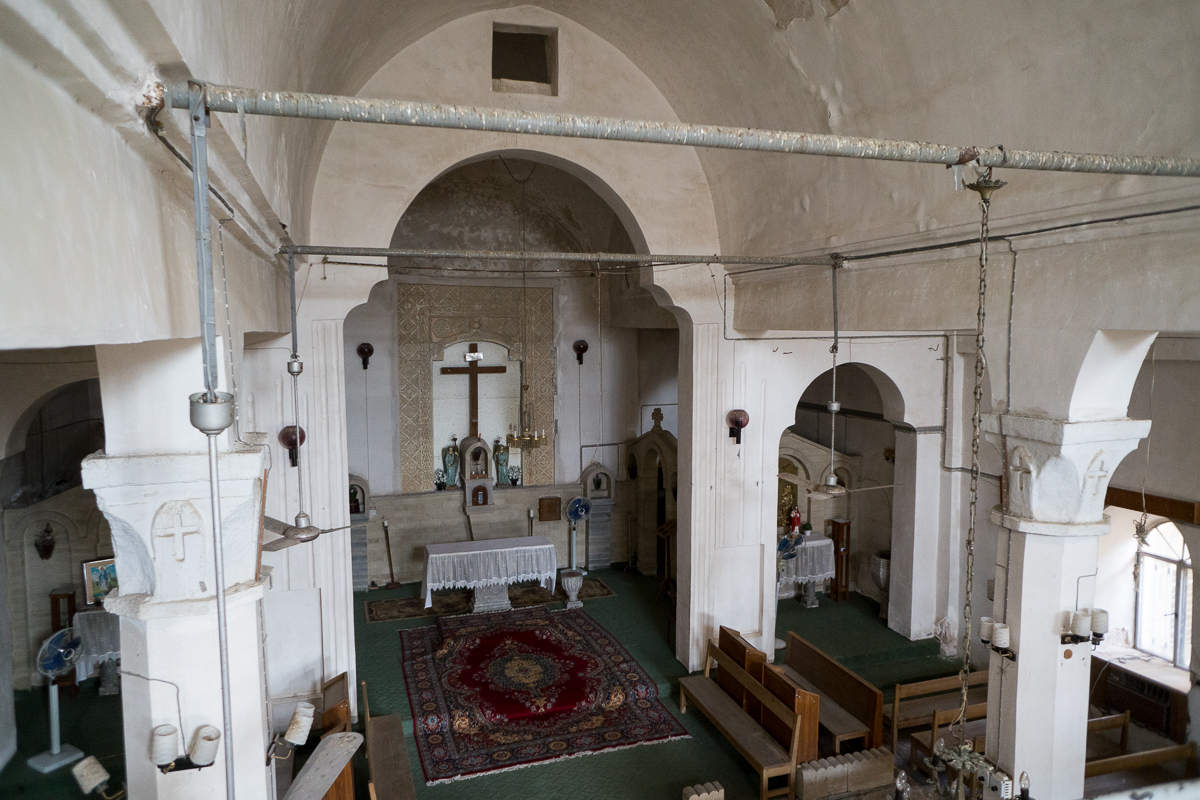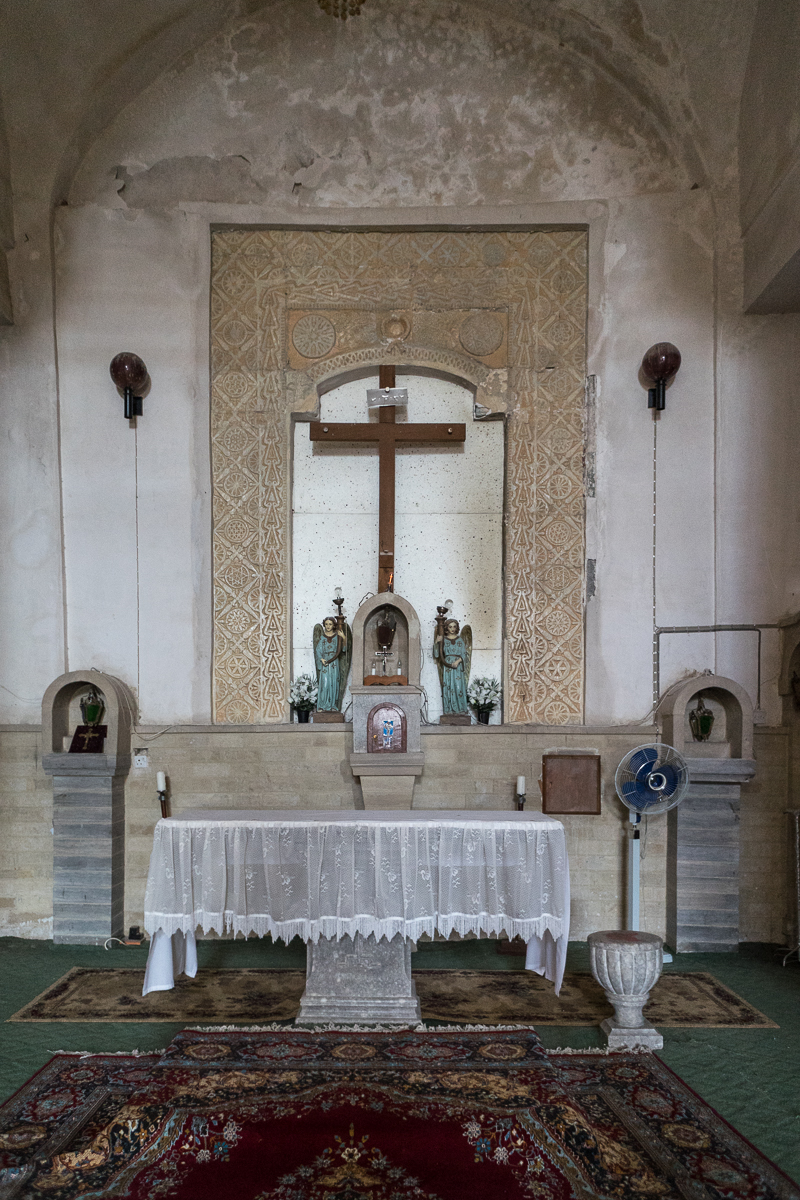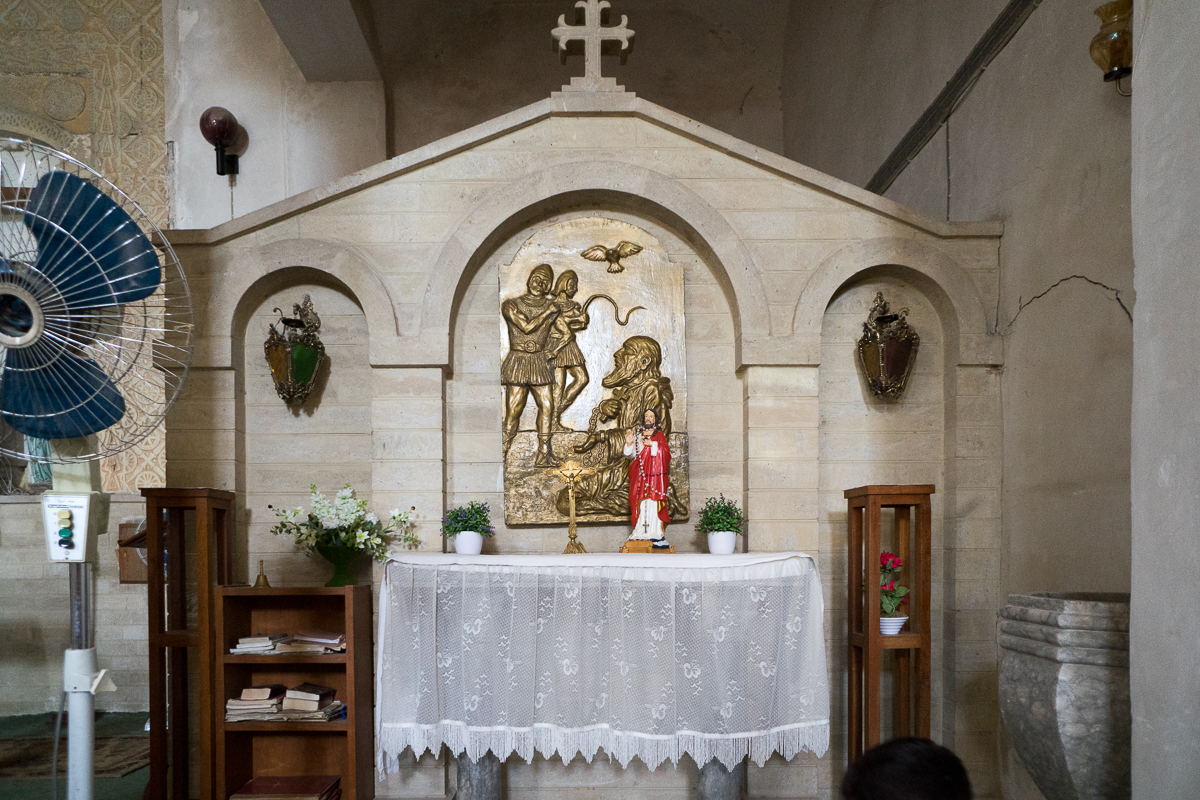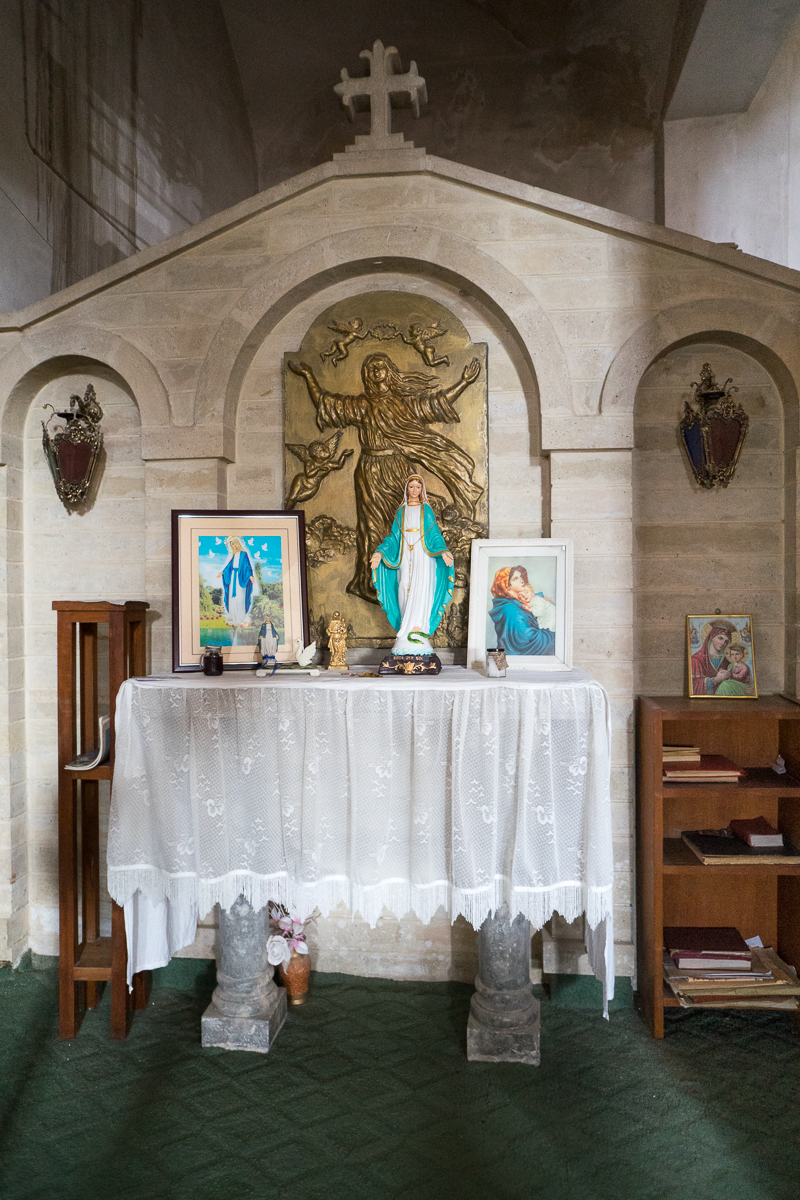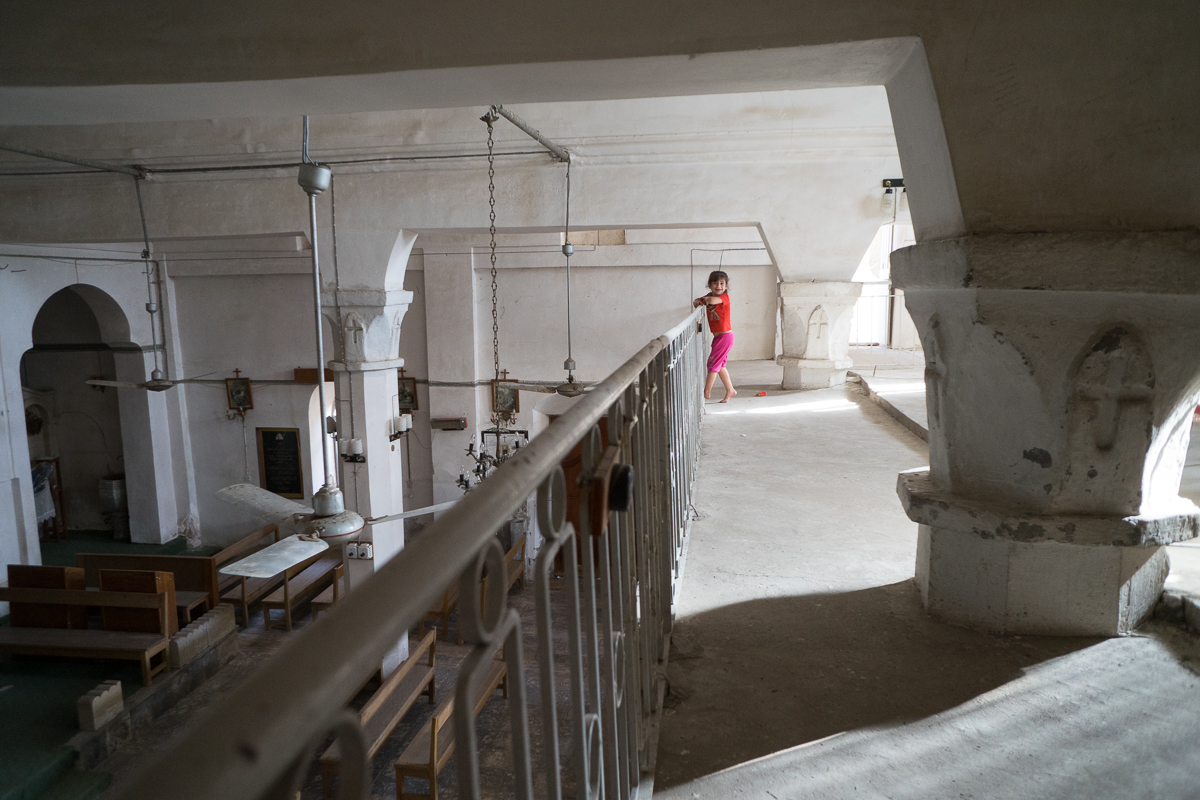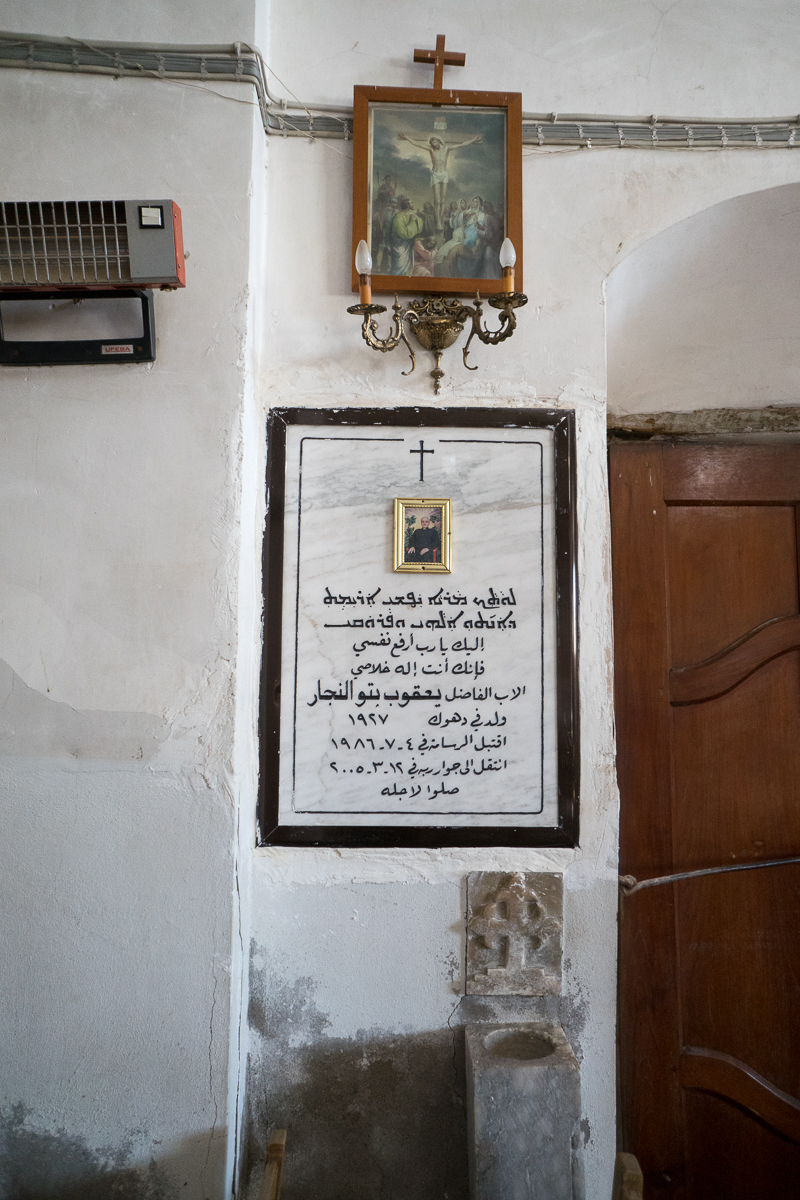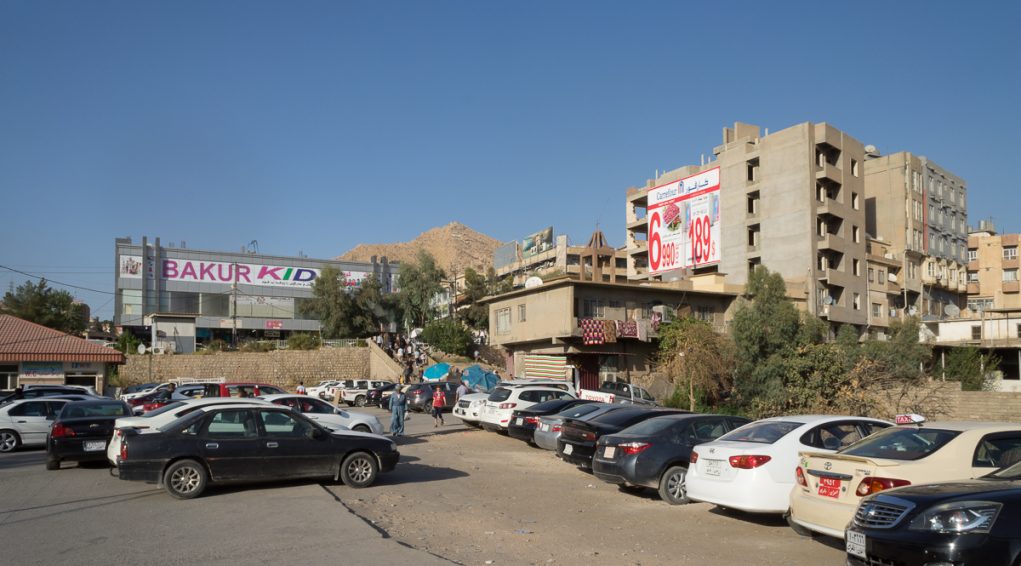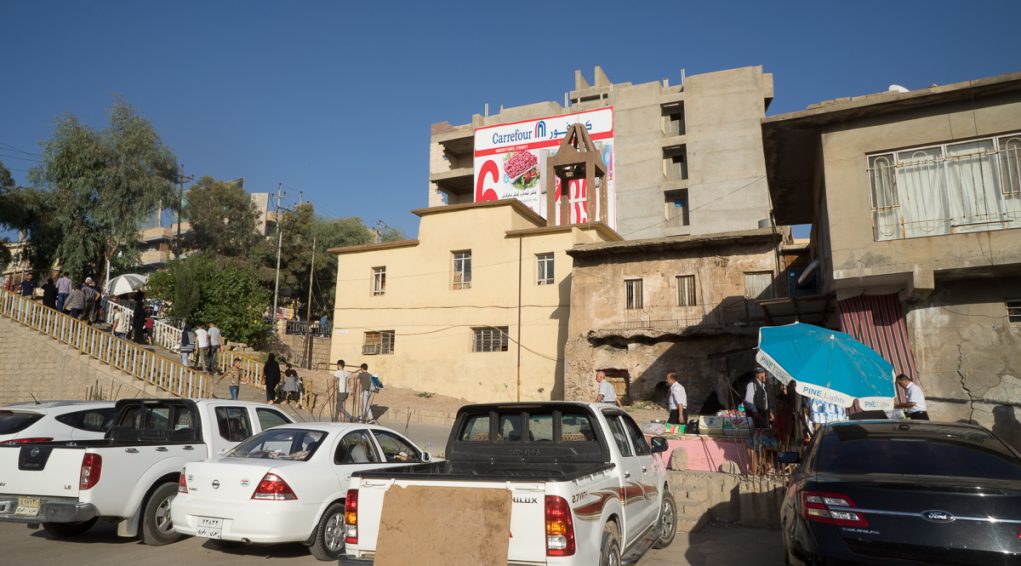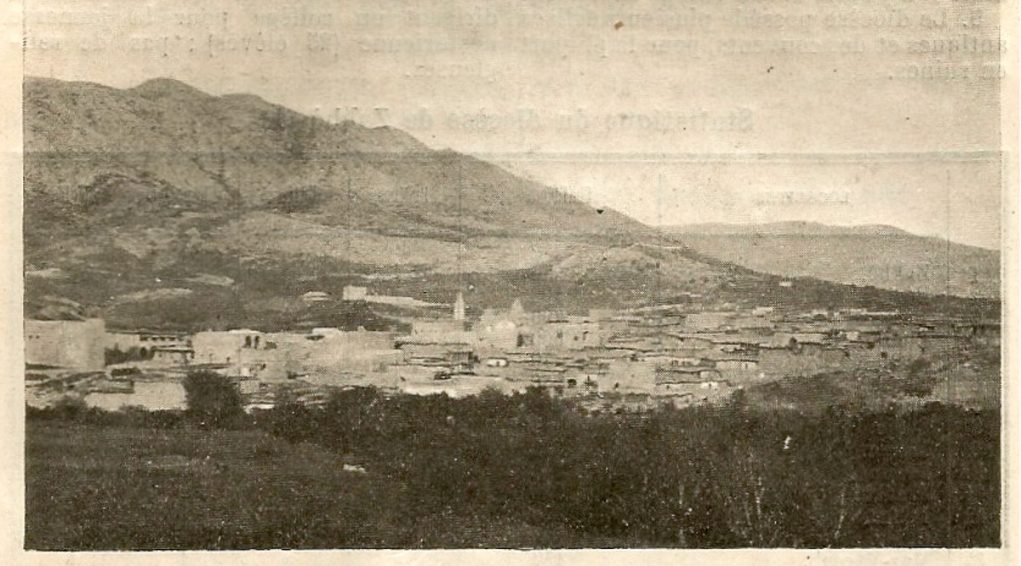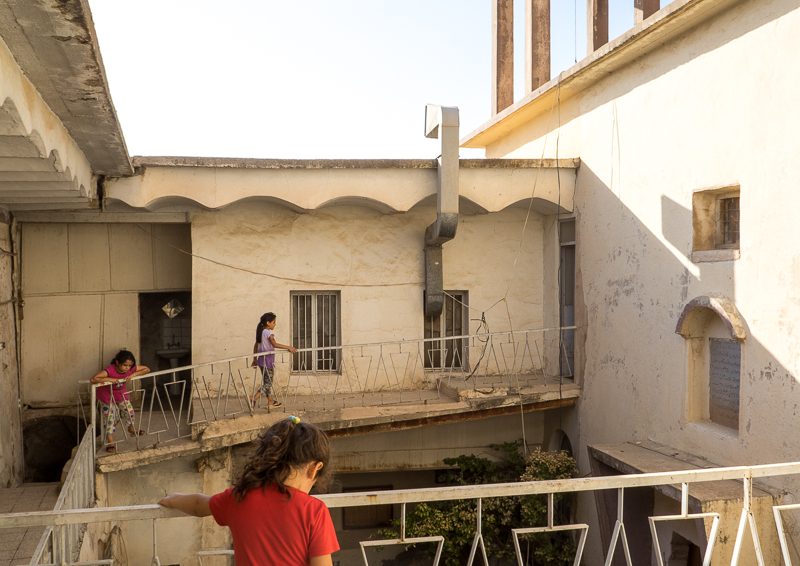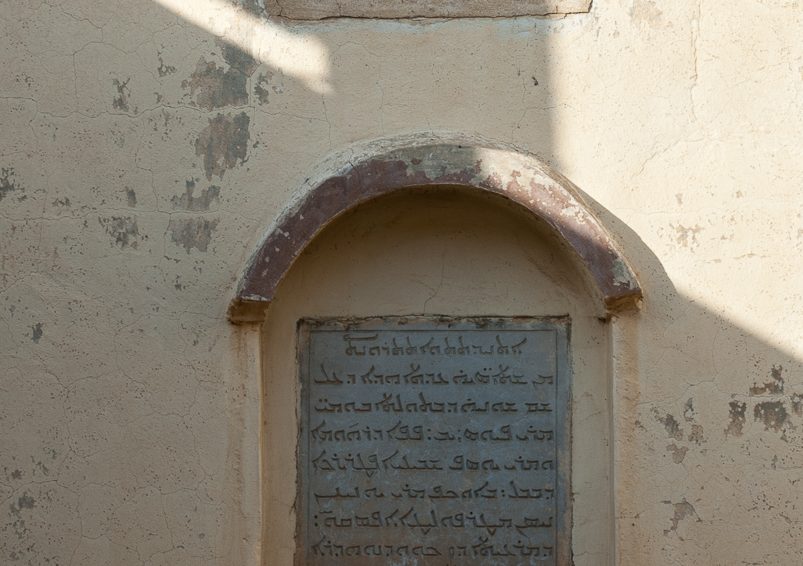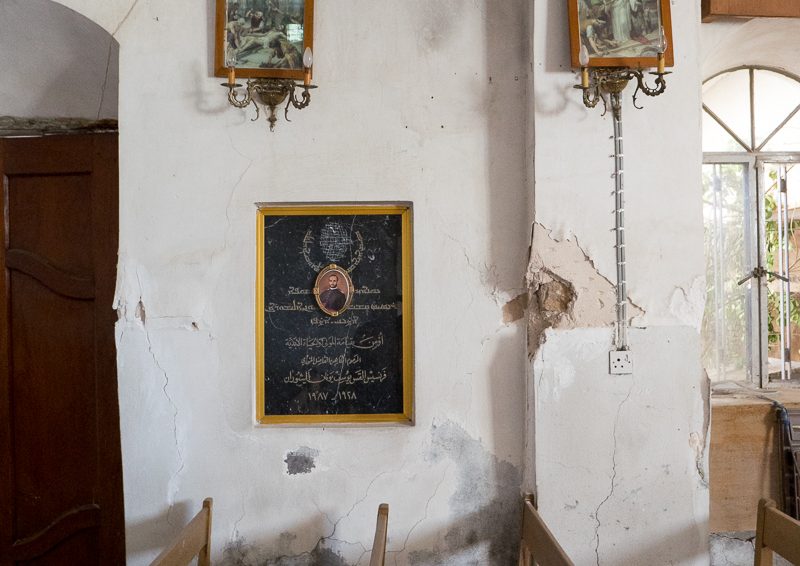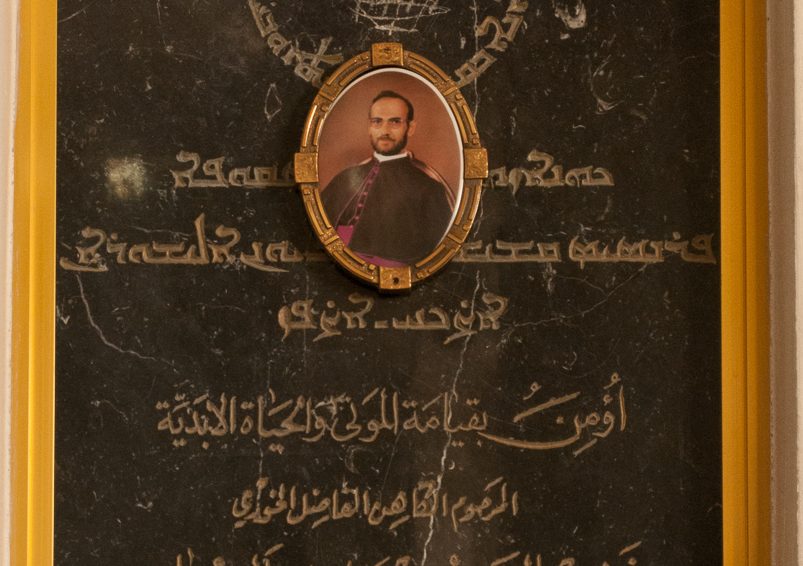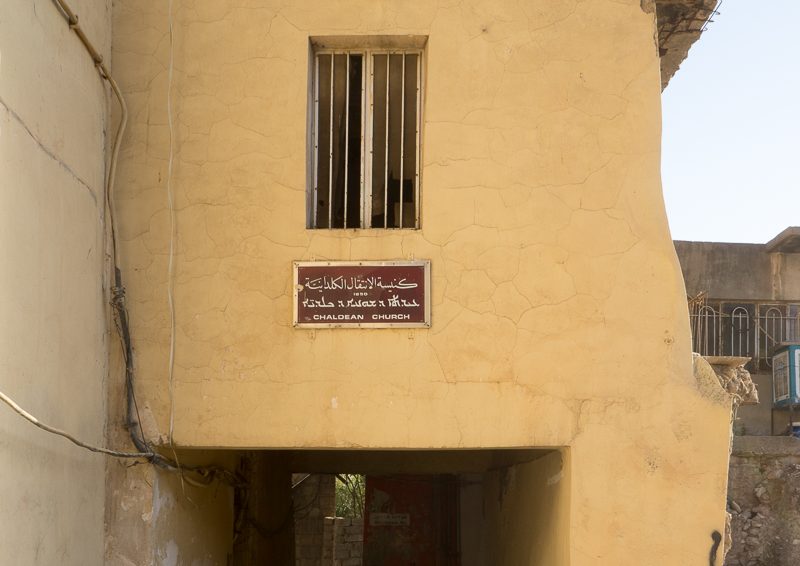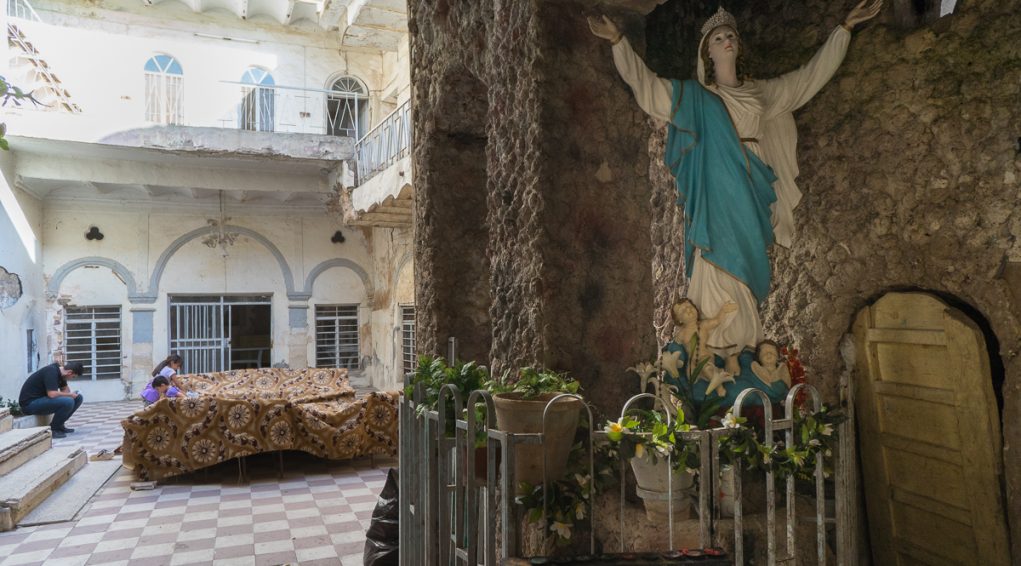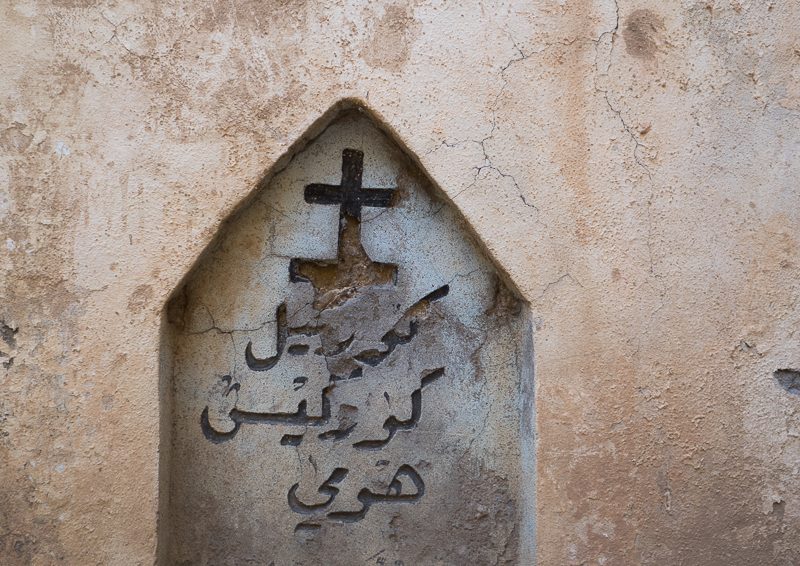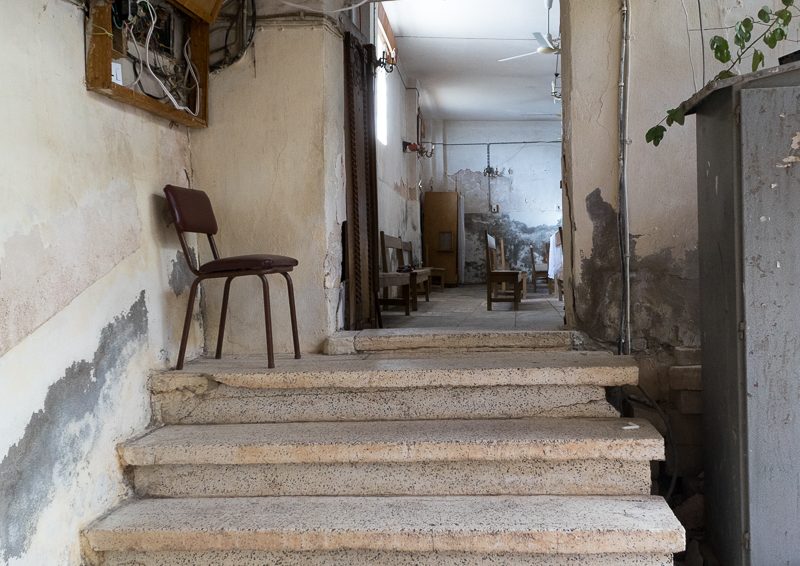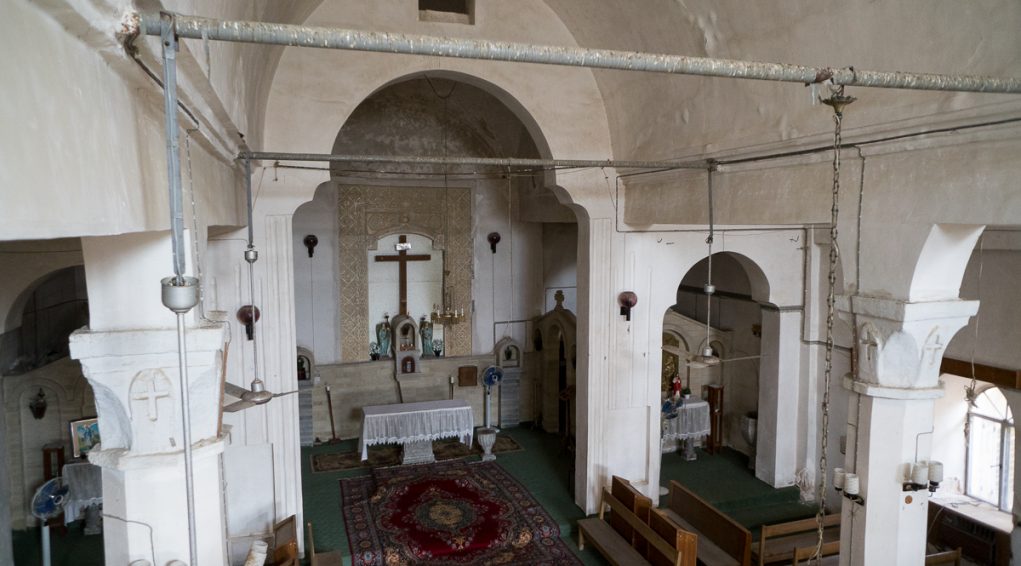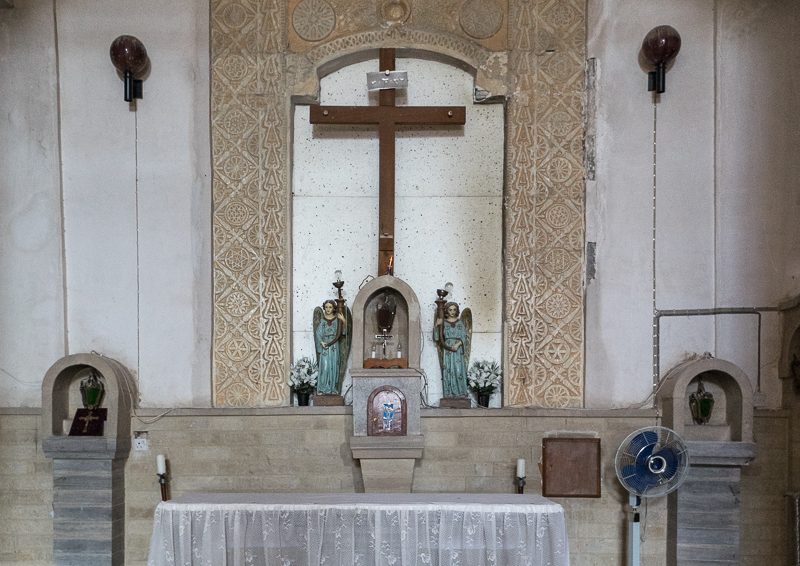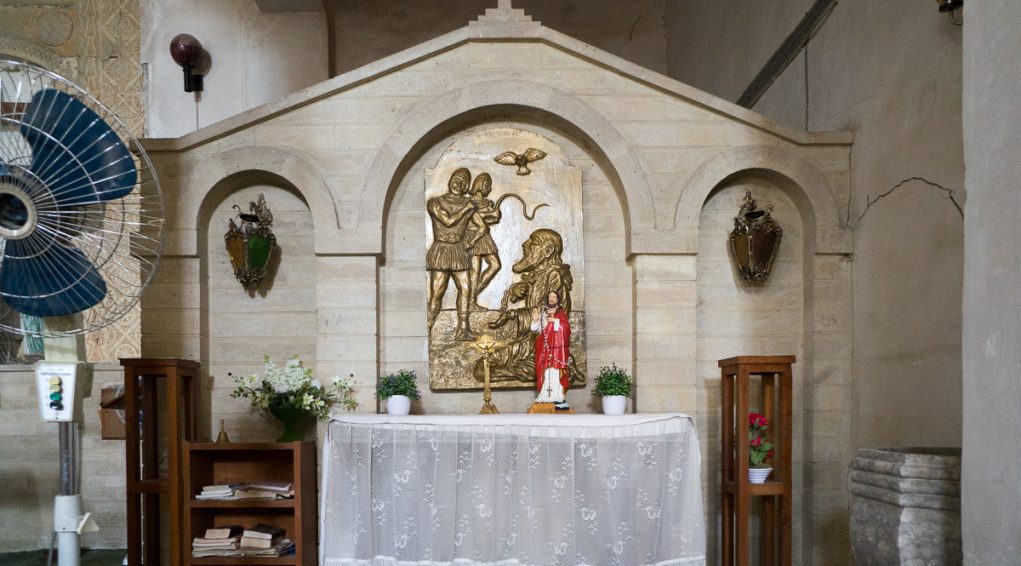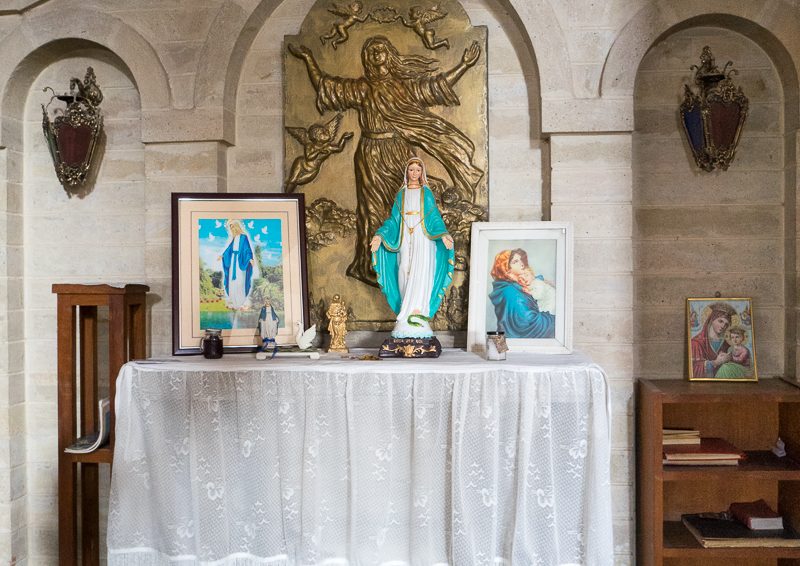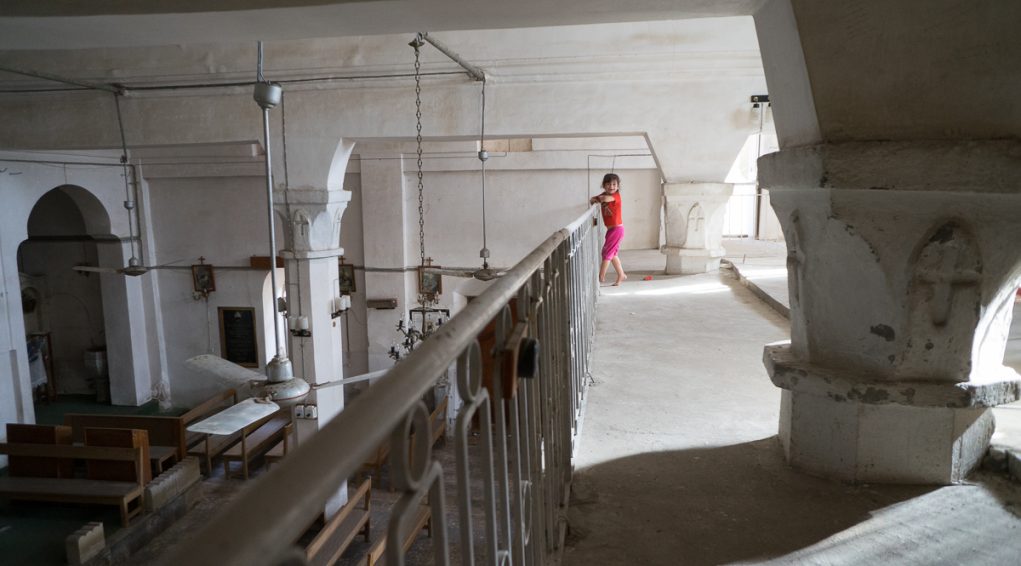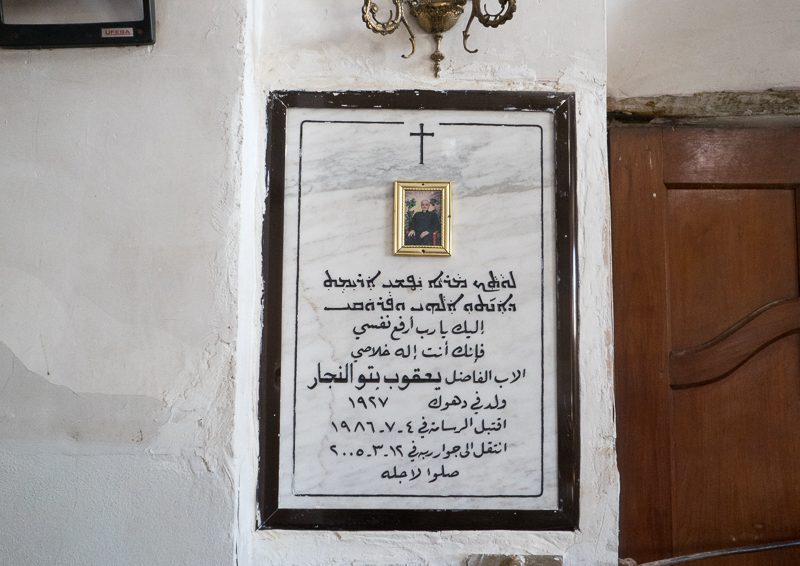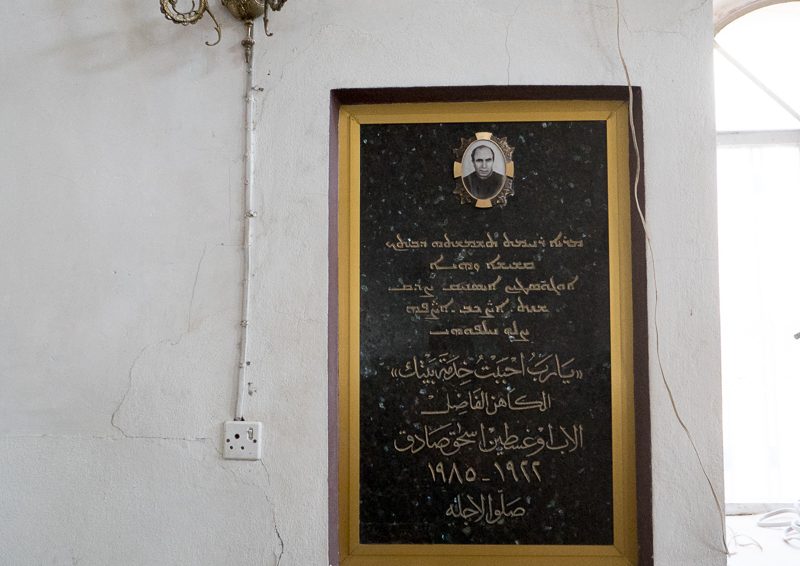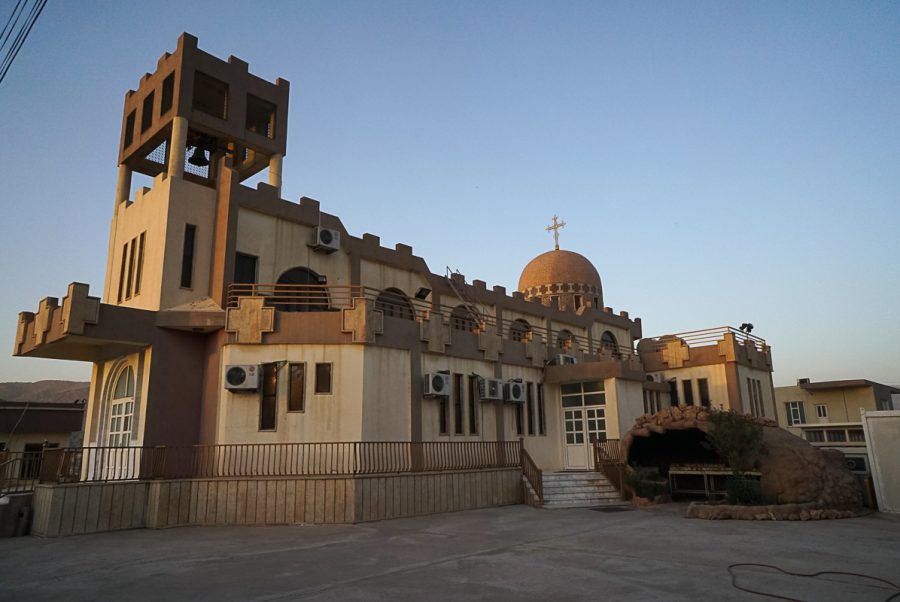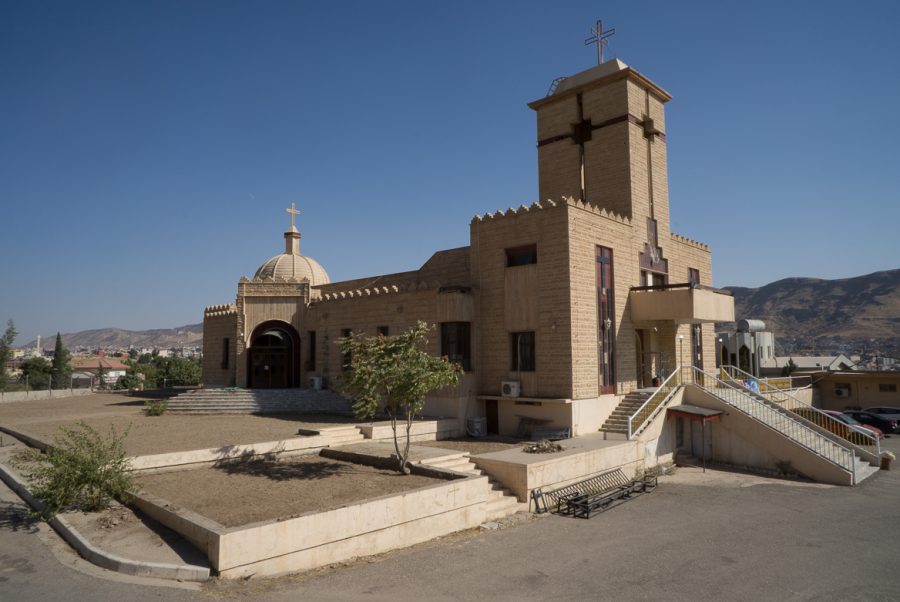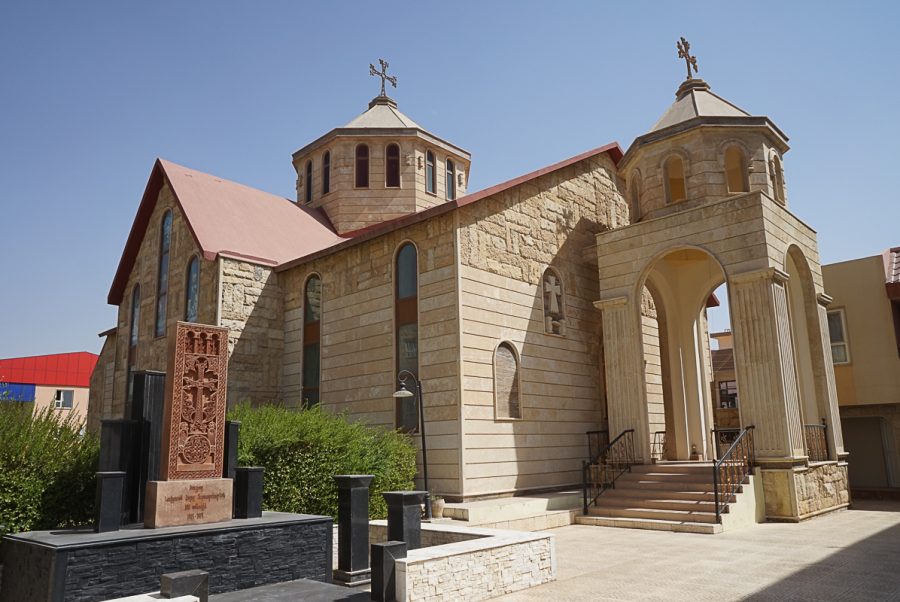The Chaldean Church of the Assumption of the Virgin Mary in Dohuk-Nohadra
The Chaldean church of the Assumption of Virgin Mary in Dohuk-Nohadra is located at 36°51’42.1″N 42°59’45.1″E and at 536 metres altitude.
.
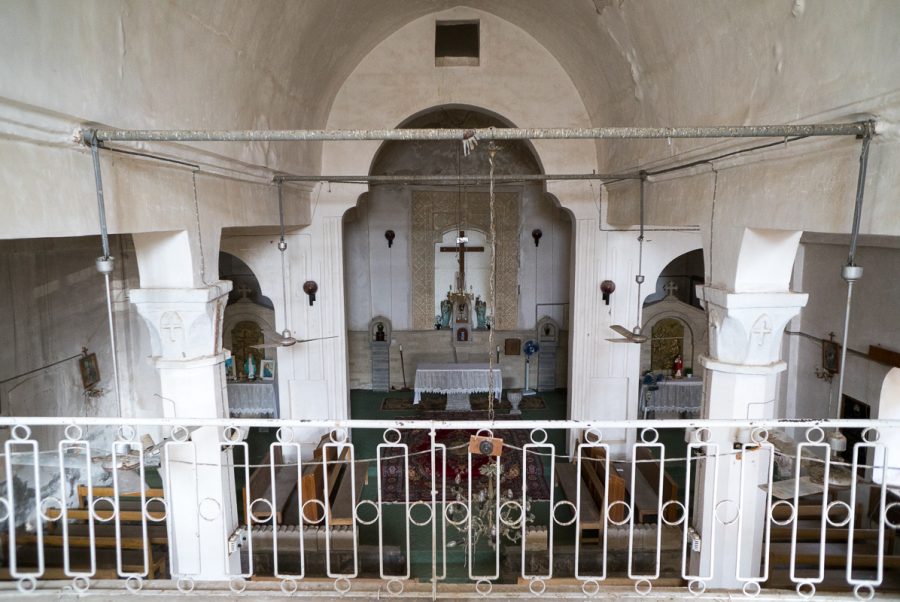
The church of the Assumption of the Virgin Mary in Dohuk-Nohadra is ancient. It is mentioned in manuscripts dating from the 16th century. Founded by the Holy Apostolic Catholic Assyrian Church of the East, it became part of the Chaldean church at an unknown date. Under the Chaldean church, the church of the Assumption of the Virgin Mary in Dohuk-Nohadra was the focus of intense religious and intellectual activity which indicates that it contained a library. As an ancient Chaldean cathedral, the church of the Assumption of the Virgin Mary is still used for annual and occasional services. This has meant the building has largely been spared from destruction and looting.
The highly respected Monsignor Francis ALICHORAN (1928 – 1987) is buried in the church of the Assumption of the Virgin Mary in Dohuk-Nohadra. He was the author of numerous publications, including historical, poetic and liturgical texts in French, Aramean (Syriac) and Suret (neo-Syriac).
Photo : The Chaldean church of the Assumption of Virgin Mary in Dohuk-Nohadra. August 2017 © Pascal Maguesyan / MESOPOTAMIA
Location
The Chaldean church of the Assumption of Virgin Mary in Dohuk-Nohadra is located at 36°51’42.1″N 42°59’45.1″E and at 536 metres altitude. The churchis situated in the city of Dohuk-Nohadra, at the heart of the autonomous region known as Iraqi Kurdistan. Dohuk-Nohadra is the administrative centre of the Dohuk district and benefits from a very favourable geographical situation, 75 km north of Mosul and 155 km north-west of Erbil, the regional Kurdish capital city[1].
Backing onto the mountain range which lines the northern part of Iraqi Kurdistan, and open onto the plain which runs along the eastern bank of the Tigris river, Dohuk is at the crossroads of numerous paths and influences.
_______
Toponymy
As often in Mesopatamia, Dohuk-Nohadra contains in the history of its toponymy a variety of cultures and civilisations that succeeded one another. Kurdish-speaking people will prefer Duhok, whilst Arabic-speaking people will choose Dahuk, whereas Syriacs would rather keep Nohadra.
In the 4th century at the time of the Persian King Shapur II and the martyr Mar Ith-Alaha, the village may also have been named Dastagard[1].
_______
[1]See “Assyrie chrétienne”,vol.II. , Jean-Maurice Fiey, Imprimerie catholique, Beirut, p.682
Fragments of Christian history
The first phase of evangelisation of Mesopotamia, from the 1st century onwards, was connected with the missions of the apostles Thaddeus (Addai), Bartholomew, and, above all, Thomas and his disciples and companions. Tradition has it that Thomas passed through Mosul where a primitive church was established in his name, and was then “arrested at Seleucia-Ctesiphon during his journey to India”[1]where he founded and structured the Holy Apostolic Catholic Assyrian Church of the East (Church of the East).
In the 4th century, the martyr of Mar Ith-Alaha around the year 379 [see the notice on the Chaldean church Mar Ith-Alaha]attests to a very ancient Christian presence in Dohuk-Nohadra. Syriac manuscripts also attest to the existence of a church and monastery before the 4th century.
Up to the fall of the Ottoman Empire, the population of Dohuk-Nohadra was mainly Christian. The Kurdish raids at the end of the 19th century, the genocide of the Armenians and Assyrian-Chaldeans (1915-1918) and the Simele massacre in 1933 led to deep and drastic changes to the local and regional demographic and denominational balances.
Today, the population of Dohuk-Nohadra consists mostly of Kurds and Sunni Muslims. The remaining Christians are mainly members of the Catholic Chaldean Church. The Church of the East, which for over a thousand years was the main denomination in Christian Assyria, managed to preserve its historical mark. This transition from the Church of the East to the Chaldean Church did not occur immediately after the schism in 1553. In 1676, the Dominican missionary Ballyet, visiting Dohuk, only counted 30 Catholic families and one single church, probably the church of the Assumption of the Virgin Mary[2]. It was at the end of the 18th century and through the 19th century that the Chaldean Church flourished. In 1913, Father Joseph Tfinkdji counted 350 Chaldeans in Dohuk, 2 priests, 1 church and 1 school[3].In around 1965, the Dominican Jean-Maurice Fiey reported that 2,200 out of the total population of 9,000 were Christians.[4]
There is also a micro-community of Armenian, non-indigenous Christians in Dohuk-Nohadra whose demographic fragility is inversely proportional to its historical roots.
_______
[1]In Histoire de l’Église de l’Orient, Raymond le Coz, published by Éditions du Cerf, 1995, p.21
[2]The ecclesiastical organisation of the church of the East, 1318-1913, David Wilmshurst, Corpus Scriptorum Christianorum Orientalium, Vol.582, Subsidia Tomus 104 LOVANII IN AEDIBUS PEETERS, 2000, p.140
[3]In “L’Église chaldéenne catholique, autrefois et aujourd’hui”, Abbé Joseph Tfinkdji, 1913, Extract from the Annuaire Pontifical Catholique from 1914. P.72
[4]In Assyrie Chrétienne, vol.II. Jean-Maurice Fiey, Imprimerie catholique, Beirut, p.681
The ancient churches of Dohuk-Nohadra
There are several ancient churches worth mentioning in Dohuk-Nohadra:
The primitive church, then the Mar Ith-Alahah convent (see notice) built in his name after his martyrdom (between the end of the 4th and 7th centuries). The current Mar Ith-Alahah church would have been built, although there is no certainty about this, on the site of the primitive church or convent.
The Mar Gorgis church, cited as having probably housed a Gospel book from 1599, gifted by the priest Auraha (Abraham). Mar Gorgis later became the Dohuk mosque[1].
The church of the Assumption of the Virgin Mary is known in the Syriac literature from the 16th and 17th centuries.
_______
[1]InAssyrie Chrétienne, vol.II. , Jean-Maurice Fiey, Imprimerie catholique, Beirut, p.682
History and current status of the Chaldean church of the Assumption of Virgin Mary in Dohuk-Nohadra
The church of the Assumption of the Virgin Mary is mentioned in 16th-century manuscripts[1]. It is also attested to in 1635, date at which it appeared bizarrely to come under the authority of the Syriac-Orthodox church, despite the fact that its foundation is reliably attributed to the Holy Apostolic Catholic Assyrian Church of the East. The church became Assyrian again before it joined the Chaldean church at an unknown date.
Under the Chaldean church, the church of the Assumption of the Virgin Mary in Dohuk-Nohadra was the focus of intense religious and intellectual activity which indicates that it contained a library, for which a “Liber Magnetis by Joseph II[2]”was written[3]. The church also came to possess a Hexameron[4]from 1701 which is today in the keeping of a British library[5].However, “of the fifty or so handwritten volumes which make up the Dohuk library, kept at the church of the Virgin Mary, very few still have the colophon bearing the name of Dohuk.”[6]
It would appear that when the new church of the Assumption of the Virgin Mary was rebuilt in 1850 its ancient architecture was revealed.
In 1948, the church was restored and even extended. This is attested to by a 10-line Syriac inscription visible on the external wall of the right-hand side aisle of the church. This tells us that this restoration took place at the time of Mar Joseph VII Ghanima, Chaldean patriarch and Mar Yōhannan Nīsān, metropolitan and bishop of the diocese of Zakho and Nohadra.[7]The priest of the church at this time was Yousif Bahro.
Another Syriac inscription marks the renovation of the church in 1972[8]. In 1977, Father Augustin Sadeq restored the church’s walls and ceiling.
As an ancient Chaldean cathedral, the church of the Assumption of the Virgin Mary is still used for annual and occasional services. This has largely spared the building from destruction and looting.
_______
[1]In « Recueil des inscriptions syriaques », Tome 2, Amir Harrak, Académie des Inscriptions et Belles Lettres, 2010, p.534
[3]In Assyrie Chrétienne, vol.II., Jean-Maurice Fiey, Imprimerie catholique, Beirut, p.683
[4]A hexameron is a theological treatise describing the six days of the creation of the world as recounted in the book of Genesis.
[5]Is this in Cambridge, as stated by Jean-Maurice Fiey, o.p, in “Assyrie chrétienne”,p.683 or at the British Library as reported by Amir Harrak in “Recueil des inscriptions syriaques”, p.534 ?
[6]In Assyrie Chrétienne, vol.II., Jean-Maurice Fiey, Imprimerie catholique, Beirut, p.683
[7]In “Recueil des inscriptions syriaques”, Tome 2, Amir Harrak, Académie des Inscriptions et Belles Lettres, 2010, p.534-535
[8]In “Recueil des inscriptions syriaques”, Tome 2, Amir Harrak, Académie des Inscriptions et Belles Lettres, 2010, p.535
Tribute to Monsignor Francis Alichoran
Monsignor Francis ALICHORAN (1928 – 1987) is buried in the church of the Assumption of the Virgin Mary in Dohuk-Nohadra. Chaldean chorbishop and patriarchal vicar in France, rector of the Chaldean Catholic mission in Paris (1973-1987), he was previously the priest of Dohuk-Nohadra (1954 – 1973). After his death on 1 July 1987, his funeral service took place at the Notre Dame cathedral in Paris on 3 July 1987. His coffin was then taken to Iraq, to the church of the Assumption of the Virgin Mary in Dohuk-Nohadra, where a funeral service was held on 5 July 1987, attended by the young Father Rabban al Qas, current bishop of Amadia and the young Father Sako, the current Chaldean patriarch.[1] A huge crowd came to pay tribute to this highly respected priest and bishop.
Born in 1928 in Harbol, in the south-east of Turkey, ordained a priest on 15 May 1954 after studying at the Syro-Chaldean seminary in Mosul, Monsignor Francis Alichoran wrote a number of publications including historical and poetic narratives in French, Aramean (Syriac) and Suret (neo-Syriac). He also translated into French the Aramean Gospels known as the Pshytta. He also wrote French and Aramean versions of the Chaldean missal. Published in 1982, it is still used in the present day in all Assyo-Chaldean churches in France.
_______
[1]See the tribute to Monsignor Françis Alichoran, in this video report produced by his nephew, the historian Joseph Alichoran. The first part shows the funeral service at Notre-Dame de Paris, on 3 July 1987, and his burial on 5 July 1987 at the church of the Assumption of the Virgin Mary in Dohuk-Nohadra: https://www.youtube.com/watch?v=D6IV5dR_RqI
Description of the Chaldean church of the Assumption of Virgin Mary in Dohuk-Nohadra
The church of the Assumption of the Virgin Mary in Dohuk-Nohadra is rather submerged in its urban setting, located close to a bridge, between a car park, a large overlooking building and a large road above.
The church is accessed through a small alleyway between a dilapidated house and the church itself. A trilingual plaque (in Arabic, Syriac and English) mentioning the 1850 restoration indicates its location.
After opening a metal gate, the visitor finds themselves in an internal courtyard around which are laid out the buildings of the former archdiocese. The buildings are still clearly inhabited (or at least used) by a family. In front of and to the right of the gate, two floors contain the former office premises and accommodation as well as a prayer altar consecrated to the Virgin Mary under the stairs. The church of the Assumption of the Virgin Mary is located on the left.
The church is elevated by a good metre above the level of the courtyard. It is accessed via two side doors. The first is to the rear of the right-hand side aisle. The second is towards the front of this same side aisle.
Inside, the church has a basilica-style, longitudinal architecture with three naves. The central naves and side aisles are separated by two pairs of octagonal pillars. The central vault is a slightly pointed arch, whereas the vaults over the side aisles are semi-circular arches.
A high tribune, built at a later date at the back of the church, takes up the full width of the building.
Aligned with the tribune, the sanctuary appears beyond the royal door with its horseshoe arches. The large royal door, in the centre, is mounted with a niche that is apparently empty. The two doors to the side aisles are smaller. At the centre of the sanctuary, behind the high altar, the wall of the apse is composed of a large sculpted stone arch, decorated with geometric friezes. The sanctuary side aisles are fitted with collateral altars, visibly added during the renovations subsequent to the 1850 reconstruction, behind which two spaces have been fitted out for liturgical purposes.
On the wall of the right-hand side aisle are three headstones. One is that of Monsignor Francis Alichoran. Bizarrely, his framed photograph is no longer in its initial place and is unfortunately hung over the Syriac inscriptions.
The church of the Assumption of the Virgin Mary in Dohuk-Nohadra is in need of major restoration work. The walls and the vault suffer from damp. The rendering and mortar are gradually crumbling away.
Monument's gallery
Monuments
Nearby
Help us preserve the monuments' memory
Family pictures, videos, records, share your documents to make the site live!
I contribute
